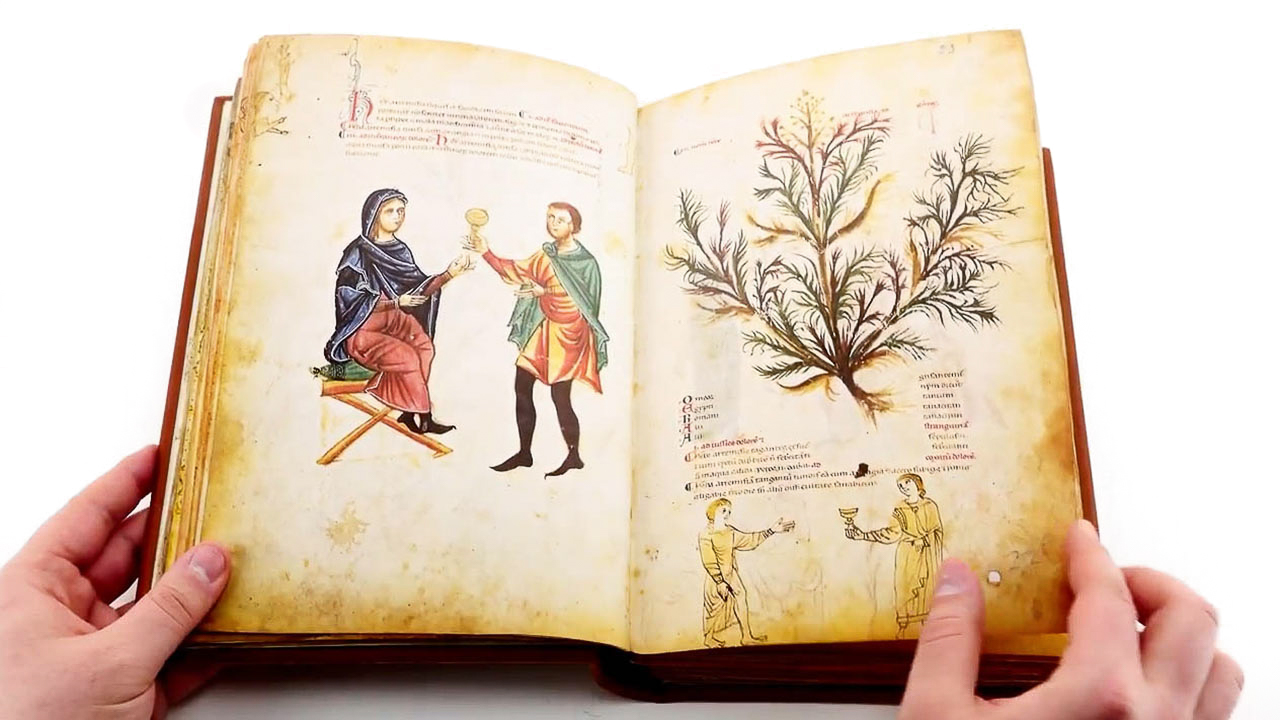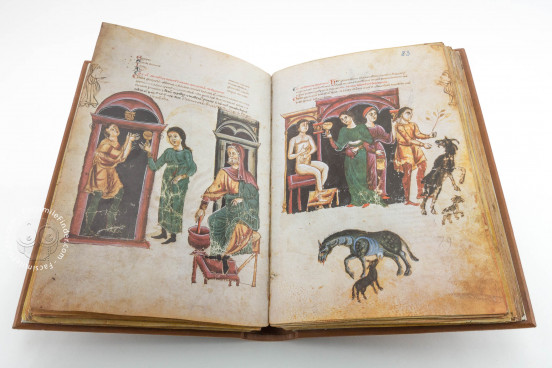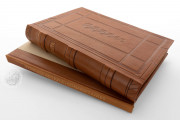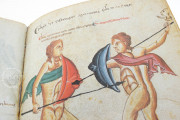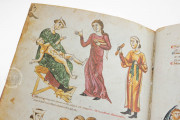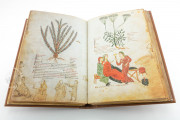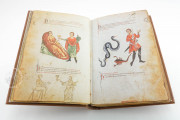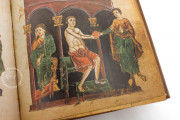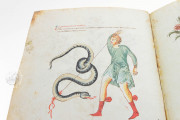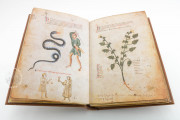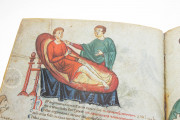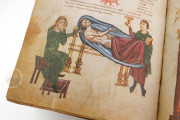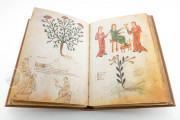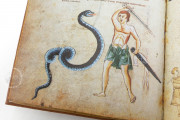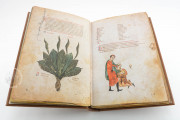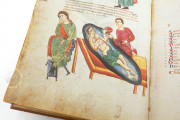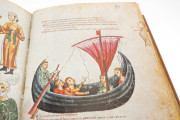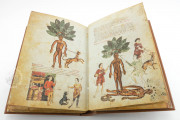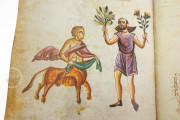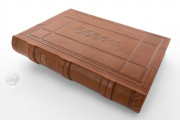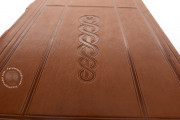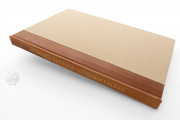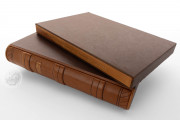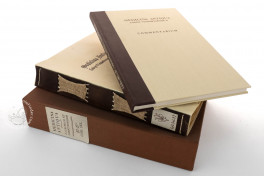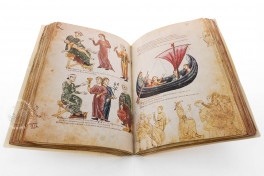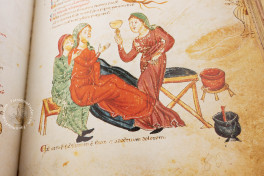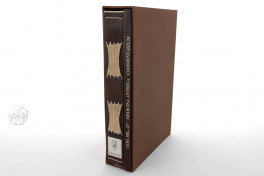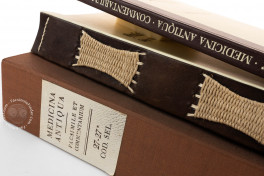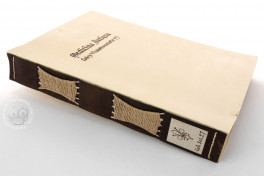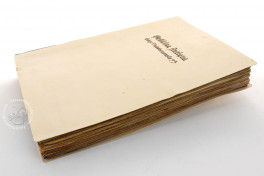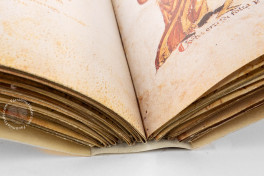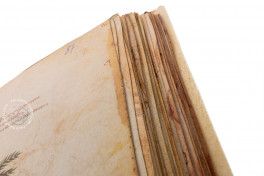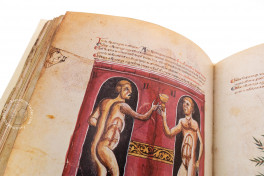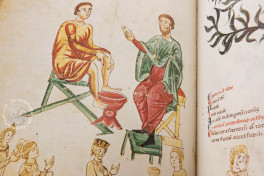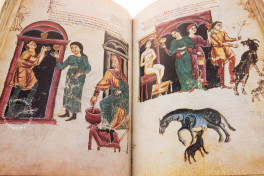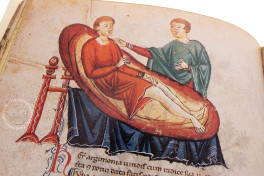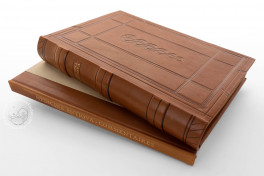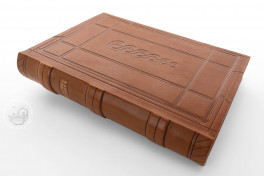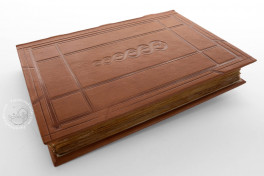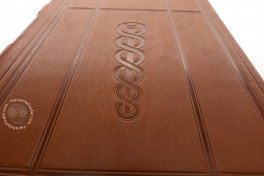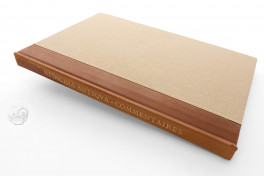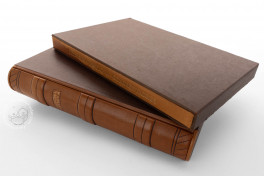A popular medical text of the Middle Ages, forty-seven manuscript copies of Medicina Antiqua survive. However, none is as richly illustrated as the copy in Vienna. Its 161 folios are filled with hundreds of pictures of herbs, medical procedures, mythological scenes as well as four spectacular full-page author portraits enriched with gold. Created in southern Italy in the first decades of the thirteenth century, its script complete with pen flourished initials is a neat Italian Gothic, however, the style of the original colored illustrations invokes the much older Late Antique.
The Vienna Medicina Antiqua is the most spectacular illustrated example of this ancient text. Although its multiple lavish programs of illumination showing centuries of use, it represents the end of a thousand-year tradition of medical practice and knowledge that would soon be supplanted by new translations of Islamic texts and scientific discoveries from the newly established European universities. Despite its obsolete text, its extensive illustrations remain a remarkable window into both the practical and mystical practice of medieval medicine.
Three Programs of Illumination
The most curious aspect of the Vienna Medicina Antiqua is its three separate programs of illumination. The original are large, brightly colored pictures illustrating the cures and herbs described in the text. These are executed in a style that suggests the third century rather than the thirteenth, done perhaps to visually match the antiquity of the medical writings.
A second series of illustrations was added primarily in the lower margin. These are lively outline cartoons with light washes of color the style of which is contemporary to circa 1400.
The final pictures are pointing figures added in the outer margins dating to before 1500. A few of them further demonstrate techniques from the text. These are the work of a decidedly untalented artist, but they add delightful character to the manuscript and further demonstrate how a later owner of the manuscript engaged with it.
A Wonder of the Italian Gothic
One would not be remiss in thinking that the Vienna Medicina Antiqua is older than the early thirteenth century. The original illuminations have a Romanesque if not Late Antique quality.
However, the manuscript is Gothic, belied by the good quality Italian Gothic textura miniature script and the blue and red pen flourished initials.
Overall the manuscript is of extraordinarily high quality and it is clear that it was created in a scriptorium with good access to older books and paintings to act as exempla for the classicizing artwork.
The Last of the Classical Tradition in Medicine
Dating no later than 1250, the Vienna Medicina Antiqua represents the end of a long textual tradition. Although its exact origins and patronage are unknown, its use through 1500 is indicated by the addition of further illustrations and the alteration of pagan and nude imagery.
How it came to Vienna is also unknown. It first appears in the 1723 catalog of additions to the library’s collection and has remained there since.
We have 2 facsimiles of the manuscript "Medicina Antiqua":
- Medicina Antiqua facsimile edition published by Akademische Druck- u. Verlagsanstalt (ADEVA), 1971
- Medicina Antiqua: Libri Quattuor Medicinae facsimile edition published by Club du Livre, 1978

